This article has an unclear citation style. (April 2015) (Learn how and when to remove this template message) |
Night and Fog (French: Nuit et brouillard) is a 1956 French documentary short film. Directed by Alain Resnais, it was made ten years after the liberation of Nazi concentration camps. The title is taken from the notorious Nacht und Nebel (German for "Night and Fog") program of abductions and disappearances decreed by the Nazis on 7 December 1941.
| Night and Fog | |
|---|---|
Film poster | |
| Directed by | Alain Resnais |
| Produced by | Anatole Dauman |
| Written by | Jean Cayrol |
| Narrated by | Michel Bouquet |
| Music by | Hanns Eisler |
| Cinematography | Ghislain Cloquet Sacha Vierny |
| Edited by | Alain Resnais |
| Distributed by | Argos Films |
Release date |
|
Running time | 32 minutes |
| Country | France |
| Language | French |
The documentary features the abandoned grounds of Auschwitz and Majdanek while describing the lives of prisoners in the camps. Night and Fog was made in collaboration with scriptwriter Jean Cayrol, a survivor of the Mauthausen-Gusen concentration camp. The music of the soundtrack was composed by Hanns Eisler.
Resnais was originally hesitant about making the film and refused the offer to make it until Cayrol was contracted to write the script. The film was shot entirely in the year 1955 and is composed of contemporary shots of the camps plus stock footage. Resnais and Cayrol found the film very difficult to make due to its graphic nature and subject matter. The film faced difficulties with French censors unhappy with a shot of a French police officer in the film, and with the German embassy in France, which attempted to halt the film's release at the Cannes Film Festival. Night and Fog was released to critical acclaim, and still receives very high praise today. It was re-shown on French television nationwide in 1990 to remind the people of the "horrors of war".
Screenplay
Night and Fog is a documentary that alternates between past and present, using both black-and-white and color footage. The first part of Night and Fog shows remnants of Auschwitz while the narrator Michel Bouquet describes the rise of Nazi ideology. The film continues with comparisons of the life of the Schutzstaffel to the starving prisoners in the camps. Bouquet then addresses the sadism inflicted upon the doomed inmates, including torture, scientific and medical "experiments", executions, and rape. The next section is shown completely in black-and-white, and depicts images of gas chambers and piles of bodies. The final topic of the film depicts the liberation of the country, the discovery of the horror of the camps, and the questioning of who was responsible for them.
Background and development
From 1954 to 1955, a number of activities took place observing the tenth anniversary of the liberation of France and of the concentration camps. One of these was an exhibition curated by Olga Wormser and Henri Michel, Resistance, Liberation, Deportation, which opened on 10 November 1954 at the Institut Pédagogique National (National Teaching Institute) in Paris. The exhibit was based on Michel and Wormser's monograph which had appeared earlier in 1954 in a special issue of Revue d'histoire de la Deuxième Guerre mondiale. The first public notice of a proposed film project was given during a radio broadcast on 10 November 1954, the opening day of the exhibition.
Although Michel was under pressure from veterans' organizations to create a film document that would honor French Resistance fighters, Wormser argued for a scholarly approach that would show the concentration camps as a systematic microcosm of the German war economy. Michel recognized that this approach would enable broader financing, and both re-envisioned the film as "communicating historical research through contemporary media." Initially, Michel thought the film could take the form of a montage of news reports. But as a result of the exhibit Resistance, Liberation, Deportation, both he and Wormser had received many items created by former inmates during their internment, making Michel and Wormster believe that a unique perspective would be created by providing an inside view of the camps. "The genocide of the Jews was treated in French remembrance as more of a side issue—something that was in any case supposedly a matter for the Jews themselves and not for the majority of society. Michel and Wormser might have wanted scholarly objectivity instead of the heroism favoured by the deportees' association...but nevertheless the Holocaust had remained a blind spot even for them."
Film producers Anatole Dauman, Samy Halfton and Philippe Lifchitz were invited to this exhibit and felt that a film should be made on the subject. Anatole Dauman, originally from Warsaw, undertook the production for Argos Films and arranged for co-financing by Films Polski, the Polish state production company. Dauman approached filmmaker Alain Resnais who had experience with documentary films since 1948. Resnais turned down the offer for over a week, feeling that only someone with first hand experience of concentration camps should attempt the subject matter. Resnais eventually agreed, providing that poet and novelist Jean Cayrol, who had been a concentration camp prisoner, would collaborate on the project. Resnais officially signed his contract for the film on 24 May 1955. Cayrol had written in 1946 about his experience as a survivor of Mauthausen in Poèmes de la nuit et brouillard ("Poems of night and fog"), which gave the documentary its title. For Resnais, the film was meant to showcase a warning that the horrors of Nazism may be repeated during the Algerian War where torture and internment were already under way.
The film was commissioned by two organizations, the first of which was the Comité d'histoire de la Deuxième Guerre mondiale (Committee on the history of the Second World War), a government commission assigned the tasks of assembling documentary material on, and of launching historical inquiries and studies of, the period of the French occupation from 1940 to 1945. The other commissioner was the Réseau du souvenir (Network of memory), an association devoted to the memory of those deported to camps. A pre-production meeting was held on 28 May 1955, during the course of which it was decided "to explain clearly how the concentration-camp system (its economic aspect) flowed automatically from fascism". The film's working title, Resistance and Deportation, was also changed to the French translation of the German term Nacht und Nebel (Night and Fog), which described handling of World War II prisoners according to a decree promulgated by Himmler on 7 December 1941. This decree provided that those resisting the Reich, arrested in their own countries, but not promptly executed, would be deported to camps in such a way that they would vanish without a trace, "into the night and fog".
The title takes on yet another level of meaning a quarter of the way through the film, when Hanns Eisler's chilling score that has accompanied images of deportation is disrupted, as the train arrives at Auschwitz. The narrator observes that during the train ride "death makes its first choice" and "a second is made upon arrival in the night and fog". The visuals cut to a shot of trains arriving in night and fog, which has become a metaphor for the mystery of their situation.
Evolving structure of the film
Michel's and Wormser's 1954 exhibit Resistance, Liberation, Deportation was organized in 9 parts:
This was adapted into 7 parts for the first draft of the film (dating from late February/early March 1955):
The outline of the film changed dramatically when in April 1955, Wormser and Michel went to Poland to attend commemorations for the tenth anniversary of Auschwitz's liberation. They wanted to include film of how Auschwitz was currently seen. Additionally they were approached by Auschwitz museum staff supplying additional documentation and images. Visiting Poland gave Wormser and Michel the opportunity to make contact with Polish archives. The result was broadening the scope of the film away from a nationalist view toward a broader European perspective.
Once Resnais joined the team, a new script (dated 11 June 1955) emerged with 12 sections:
- The camp, deserted in 1956 (mixture of the four camps)
- An "algebraic" history of Nazism
- Himmler's visit to Dachau; All is in place, the mill starts to grind bones
- The convoys
- Arrival at the camp
- Quarantine and daily life
- The locations of the camp
- Himmler's second visit; Continuation of the history of Nazism
- The proliferation of the system
- The techniques of extermination
- The evacuation of the camps; What the Allies found
- The Auschwitz Museum; The lesson to be learned
Filming
The film draws on several sources, including black-and-white still images from various archives, excerpts from older black-and-white films from French, Soviet, and Polish newsreels, footage shot by detainees of the Westerbork internment camp in the Netherlands, or by the Allies' "clean-up" operations, plus new color and black-and-white footage filmed at concentration camps in 1955. Resnais filmed his color sequences in Eastmancolor rather than Agfacolor, using the footage to contrast the desolate tranquility of several concentration camps—Auschwitz, Birkenau, Majdanek, Struthof, and Mathausen—with the horrific events that occurred there during World War II, to muse on the diffusion of guilt, and to pose the question of responsibility.
The film also deals briefly with the prisoners' conditions, and shows disturbing footage of prisoners and dead victims in the camps. While Night and Fog states that the Nazis made soap from the corpses, giving the possible impression that this was done regularly, this claim is nowadays considered untrue, with the exception of isolated cases. Researching the film was difficult for Resnais, who suffered nightmares from filming and found himself waking up screaming in the night. These nightmares passed as Resnais began actual filming in Auschwitz.
From 29 September to 4 October 1955, Resnais and his crew filmed at Auschwitz-Birkenau. From there, scenes were shot at Majdanek from 7 to 10 October. For the archival material, Resnais had to use black-and-white footage, but did not receive any from English, German or French military sources. Some of the stock footage in the film is from Michel and Wormser's exhibit. Other stock footage is from the Rijksinstituut voor Oorlogsdokumentatie (National institute for war documentation) in the Netherlands, and from French television, Gaumont Film Company, and the association of former deportees.
Cayrol was aided by mutual friend and film maker Chris Marker while writing the commentary that was spoken by actor Michel Bouquet. After viewing the images in the editing room, Cayrol became sick to his stomach and was unable to write further. Marker's contribution was to adapt the written text to the rhythm of the images in the film. While editing the film, Resnais felt a feeling of general discomfort, stating that he "had scruples, knowing that making the film more beautiful would make it more moving - it upset me".
Scoring
Originally Wormser and Michel had wanted to use the song "Chant des Marais" (Peat Bog Soldiers) as a recurring leitmotif, as it was an authentic prisoner song. Resnais's presence on the production team changed the idea to have an originally-composed score. It was Chris Marker's suggestion to approach Hanns Eisler, to which Resnais agreed after hearing a recording of his music. Although he was concerned that the composer's fee would put the film over budget, the producer Dauman was supportive. Eisler was invited to compose the music by Argos Films on 18 October 1955 offering 200,000 francs and help in obtaining a visa to enter France. Resnais also sent Eisler a "lyrical" letter. In what Resnais considered a stroke of luck, Eisler opened the letter in the presence of Vladimir Pozner, who was familiar with Resnais and urged Eisler to accept the offer immediately. Eisler agreed to do it by telegram on 25 October.
Eisler arrived in Paris on 30 November 1955. In a letter to his wife Louise he wrote:
The film is grandiose, horrible, showi
Watch movie Night And Fog 1955 Film online on Amazon
Watch movie Night And Fog 1955 Film online
Watch The Movie On PrimeShikari Full HD Movie Download
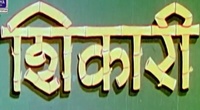
Arjun Full HD Movie Download
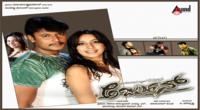
chor mandli 2 Full HD Movie Download

Naami Chor Full HD Movie Download
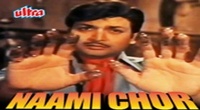
Shriman Satyawadi Full HD Movie Download
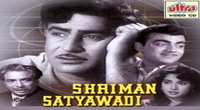
Sadak Chhap Full HD Movie Download
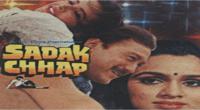
Ek Jaan Hai Hum Full HD Movie Download
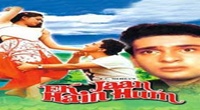
Tees Maar Khan Full HD Movie Download

Hoshiyar Full HD Movie Download
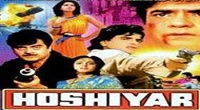
Chanda Aur Bijali Full HD Movie Download
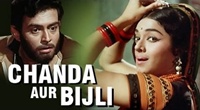
Veerabaahu Full HD Movie Download
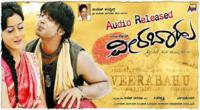
Sakkanodu Full HD Movie Download
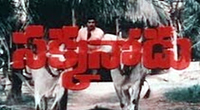
Shiva-The Power Full HD Movie Download
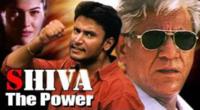
Moti Verana Chok Ma Full HD Movie Download
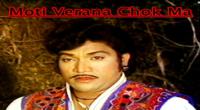
I Am Legend Full HD Movie Download
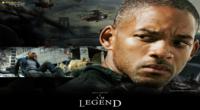
Grand Mothers Stories Full HD Movie Download
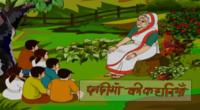
Kanne Radha Full HD Movie Download
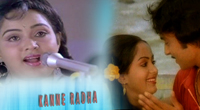
Chenna Kesava Reddy Full HD Movie Download
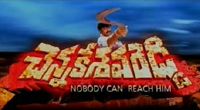
Sangeetha Laxmi Full HD Movie Download
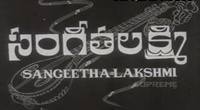
Ayaash Full HD Movie Download
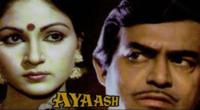
Kati Patang Full HD Movie Download
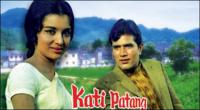
Download latest Movie from bollywood
- 1> baaghi 3
- 2> THE SKY IS PINK MOVIE FULL STORY AND REVIEW
- 3> Luka Chuppi
- 4> TO ALL THE BOYS I’VE LOVED BEFORE
- 5> Kabir Singh
- 6> Street Dancer 3D
- 7> Simmba
- 8> Gone Girl
- 9> The Girl Who Lived
- 10> Ludo
- 11> DILWALE DULHANIA LE JAYENGE
- 12> GUILTY
- 13> The Godfather
- 14> Adventures of Rusty
- 15> Sooryavanshi
- 16> Satyameva Jayate 2
- 17> Thappad
- 18> Bhool Bhulaiyaa 2
- 19> KGFChapter 2
- 20> Mardaani 2
- 21> Pinjar
- 22> Shivaji maharaj
- 23> Ek Villian 2
- 24> Hungama 2
- 25> Divergent
- 26> Mumbai Saga
- 27> The Internship
- 28> HIT (telugu)
- 29> Panga
- 30> The perfect date
- 31> 16 December
- 32> Gopala Gopala (Telugu)
- 33> Brahmastra
- 34> Gangubai Kathiawadi
- 35> Manmadhudu
- 36> Nenu local
- 37> Mahanati
- 38> Shatamanam bavathi
- 39> Lagaan
- 40> After
- 41> MOM
- 42> Shamshera
- 43> Raguvaran BTech
- 44> Khakee
- 45> The villain
- 46> OM
- 47> Mr. perfect
- 48> Bueatifull mind
- 49> Hichki
- 50> Gabbar Singh
- 51> Jogi
- 52> Before Sunrise
- 53> Before Sunset
- 54> Before Midnight
- 55> The Big Bull
- 56> Top Gun: Maverick
- 57> The Purge
- 58> The Sky is Pink
- 59> Laxmmi Bomb
- 60> Sadak 2
- 61> Sufna
- 62> Prithviraj
- 63> PK
- 64> Coolie No 1(2020)
- 65> Black Widow
- 66> Dear Zindagi
- 67> Dil Bechara
- 68> PHIR HERA PHERI
- 69> WAR
- 70> Dostana
- 71> RRR: Roudram Ranam Rudhiram
- 72> Maidan
- 73> Dabbang 3
- 74> Chhalaang
- 75> life as we know it
- 76> SherShaah
- 77> Sandeep Aur Pinky Faraar
- 78> Event Horizon
- 79> 83
- 80> Radhe: Your Most Wanted Bhai
- 81> Gunjan Saxena: The Kargil Girl
- 82> Mr India
- 83> Vivah
- 84> Anokha Bandhan
- 85> Ghost
- 86> Bhoot: Part One - The Haunted Ship
- 87> Haseen Dilruba
- 88> Laal Singh Chaddha
- 89> Qismat
- 90> Rajput
- 91> Drive
- 92> Dil Chahta Hai
- 93> Dil Ki Baazi
- 94> Dil Ka Rishta
- 95> Teesri Manzil
- 96> Dil
- 97> Love Aaj Kal
- 98> Khaali Peeli
- 99> Bunty Aur Babli 2
- 100> Atrangi Re
- 101> Gulabo Sitabo
- 102> Jodi
- 103> Suraj Pe Mangal Bhari
- 104> Deewana
- 105> Attack
- 106> Sardar Udham Singh
- 107> Toofan
- 108> THE LOVEBIRDS
- 109> Jersey
- 110> Ginny Weds Sunny
- 111> Thalaivi
- 112> Shiddat
- 113> Angels vs Zombies
- 114> Koi Mil Gya
- 115> Thank God
- 116> Bhuj: The Pride of India
- 117> Hum Aapke Hain Kaun
- 118> The Platform
- 119> Bird Box
- 120> Roohi Afzana
- 121> Torbaaz
- 122> Nikamma
- 123> World War Z
- 124> Extraction
- 125> Train to Busan
- 126> Life of Pi
- 127> SHAADI MEIN JROOR AANA
- 128> Himmat Aur Mehnat
- 129> To All The Boys: P.S. I Still Love You
- 130> Mimi
- 131> Good Newwz
- 132> Shubh Mangal Zyada Saavdhan
- 133> Raabta
- 134> Harry Potter and the Philosopher's Stone
- 135> Harry Potter and the Chamber of Secrets
- 136> Chhapaak
- 137> War of the Worlds
- 138> Harry Potter and the Prisoner of Azkaban
- 139> Harry Potter and the Goblet of Fire
- 140> MURDER MYSTERY
- 141> Shakuntala Devi
- 142> Bachchan Pandey
- 143> Jayeshbhai Jordar
- 144> Sheer Qorma
- 145> Saina
- 146> 'O' Pushpa I hate tears
- 147> Kedarnath
- 148> MS Dhoni The Untold Story
- 149> Chhichhore
- 150> Badhaai Ho
- 151> Unstoppable
- 152> Oz the Great And Powerful
- 153> The Girl on the Train
- 154> Haathi Mere Saathi 2020
- 155> The Conjuring: The Devil Made Me Do It
- 156> Gandhi Se Pehle Gandhi
- 157> The Song of Scorpions
- 158> Srimanthudu
- 159> Hello Guru Prema Kosame
- 160> Beauty and The Beast
- 161> Black Panther
- 162> Charlie and the Chocolate Factory
- 163> Bole Chudiyan
- 164> Fidaa
- 165> Duvvada Jagannadham
- 166> Bruce Lee: The Fighter
- 167> Hyper
- 168> Yaara
- 169> Red (2020)
- 170> Shivam
- 171> That Is Mahalakshmi
- 172> Nishabdham
- 173> Aashram 2020 web series
- 174> Laxmii
- 175> Mismatched
- 176> STUDENT OF THE YEAR 2
- 177> NAIL POLISH
- 178> Ramprasad Ki Tehrvi
- 179> KAAGAZ
- 180> 12 o Clock
- 181> The Power
- 182> bolo hau
- 183> Tribhanga
- 184> JAMUN
- 185> Madam Chief Minister
- 186> Maasaab
- 187> Aadhaar
- 188> Tanhaji
- 189> Bhaagi 3
- 190> Bhootnath
- 191> MALANG
- 192> Jai Mummy Di
- 193> Haathi Mere Saathi 2021
- 194> Shakeela
- 195> Unpaused
- 196> Annayya
- 197> Vamsoddharakudu
- 198> Mrugaraju
- 199> Narasimha Naidu
- 200> Sankranti
- 201> Manasu Maata Vinadhu
- 202> Anjaane
- 203> Apaharan
- 204> Bachke Rehna Re Baba
- 205> Bewafaa
- 206> Roohi
- 207> Radhe
- 208> Zindagi Khoobsoorat Hai
- 209> Yeh Mohabbat Hai
- 210> Yeh Kya Ho Raha Hai?
- 211> The Tomorrow War
- 212> DehradunDiary
- 213> Meri Shaadi Karaoo
- 214> Matruu Ki Bijlee Ka Mandola
- 215> No One Killed Jesica
- 216> Aag Ka Goola
- 217> Eight Million Dollars
- 218> Three Hundred
- 219> Cats and Dog
- 220> Decoy
- 221> Gold Rush
- 222> You Have Got Mail
- 223> Final Destination three
- 224> Tofan
- 225> Jungle
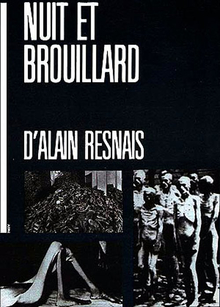 Story of movie Night And Fog 1955 Film :
Story of movie Night And Fog 1955 Film : 